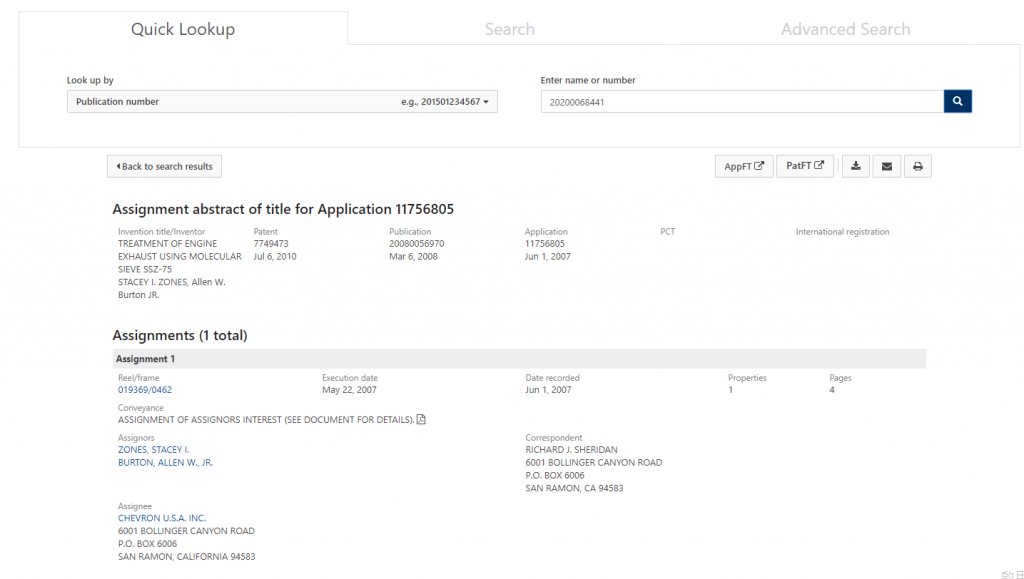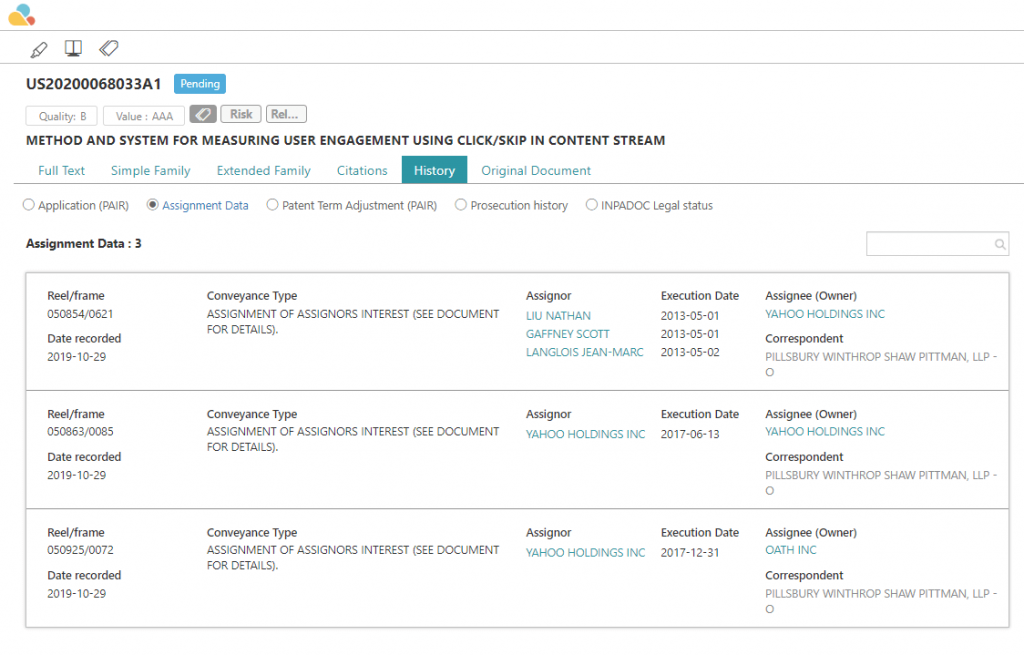When it comes to patents, many people outside of the industry often make the assumption that the person listed as the inventor on a patent is automatically the owner of that patent as well.
While this is certainly true in some cases, there are several instances when another person or even a company may be assigned ownership of the patent. This is called a “patent assignment,” and it is the subject of today’s article.
Table of contents
- Patent Assignment: A Basic Definition
- An Example of a Patent Assignment
- An Additional Patent Assignment in Writing
- Patent Assignments and the USPTO
- Patent Assignment Database
- Patent Assignment Search
- Is a Patent Assignment a Type of Licensing?
- Patent Assignment: An Important Element of the Patent Ecosystem
Curious about the patent assignment history? Check out the specific data here!
Patent Assignment: A Basic Definition
Basically speaking, a patent assignment is a legal way for an inventor to transfer ownership of a patent to a business.
As you may recall, in the United States, only a person (or group of people) can be listed as the inventor of a patent; a business cannot be listed as the inventor. However, a business can be assigned the ownership of the patent by a person (or group of people).
In this type of agreement, the “assignor” transfers their patent rights to the “assignee.”
An Example of a Patent Assignment
It might be helpful to look at an example of a patent assignment. Let’s say an employee of a company comes up with a new invention. This individual employee is the inventor of the product and will be listed on the patent application as such.
However, since patents can be very valuable, most companies already have a patent assignment agreement with their employees in place.
This type of agreement would typically state that any type of intellectual property created by an employee of a company while employed by that company would become the property of the company.
Since the company in this example made sure that its employee signed a patent assignment form upon being hired, the invention that the employee came up in the company’s R&D facility will be assigned to the company. The inventor will still be listed in the patent application (and on the patent, if granted) as the inventor.
An Additional Patent Assignment in Writing
In addition to the patent assignment agreement mentioned above, it is also recommended that a specific written assignment from the inventor to the company be made whenever a patent application is filed.
If this step is taken, then there will be less trouble if an inventor leaves the company before the patent application has been completed or attempts to contest the patent down the road.
Patent Assignments and the USPTO
In the United States, patent assignments can be recorded at the USPTO. This can be done at the US patent office’s Assignment Recordation Branch.
Although this can be done online (and without any fees if done electronically) using the Electronic Patent Assignment System (EPAS), it should be noted that all patent assignment paperwork must be submitted within three months of the patent’s assignment date.
Patent Assignment Database
The Patent Assignment Database from USPTO keeps all the patent assignment data records from August 1980 until now. The transfer record will be updated by USPTO, the most recent entry should be the current assignee. However, the system does not check the correctness of the data, specify the current assignee and update timely. It is best to double-check with a third-party database for accuracy.

Patent Assignment Search
If you need to find out who owns a patent, then you can conduct a patent assignment search. This will tell you who has been assigned a particular patent in the past and who the current assignee is now.
The USPTO does offer a free patent assignment search tool on its website, as do other third-party intelligence platforms, such as Patentcloud.
These platforms often feature superior patent assignment databases, with processes that ensure that the assignment data has been cleansed and corrected, meaning more accurate and comprehensive search results.

Start your patent assignment search here with Patentcloud’s Patent Search.
Is a Patent Assignment a Type of Licensing?
Although similar in some ways, these two patent activities are actually quite different.
A licensing agreement means that the owner of the patent (or “licensor”) gives another person or company (the “licensee”) the right to use the patented technology for an agreed-upon period of time. However, the licensor remains the owner of the patent.
A patent assignment, on the other hand, involves a complete and permanent transfer (or “assignment”) of ownership of a patent from the owner (or “assignor”) to another party (the “assignee”).
Put simply, patent assignment involves “ownership” while patent licensing involves “permission to use.”
Patent Assignment: An Important Element of the Patent Ecosystem
Assignment data analysis can provide actionable insights for those operating in the transaction market and IP stakeholders alike, enabling them to:
- Anticipate the future strategy of a company: the acquisition of patents covering a specific technology could well be an indicator of the company’s future plans and strategies;
- Anticipate the developments of an industry: multiple companies — especially larger ones — acquiring patents in a certain technology field could also prove to be an indicator of the imminent popularity of a technology field.
The acquisition of Oculus VR by Facebook is a perfect example of this: in 2014, Facebook bought the VR company for around $2 billion. In the deal, Facebook also acquired all of the patents. Facebook’s focus on VR was a significant moment: today, VR technology is one of the most active patent-wise. This activity is not just limited to the gaming sector, the following industries have also experienced increased activity:
- Medicine;
- Data visualization;
- Aviation;
- Military;
- The treatment of mental illnesses.
The acquisition by Facebook proved to be a clear signal that:
- Facebook was likely to invest heavily in the development of VR technologies;
- The VR industry was going to be popular in the near future.
There you have it. Though often overlooked and even misunderstood, patent assignments are actually a very important element of the patent ecosystem. With a better understanding of patent assignments, you can gain valuable insights into industry trends and even the business strategies of specific companies. You can also gain a better understanding of a company’s own R&D capabilities.

